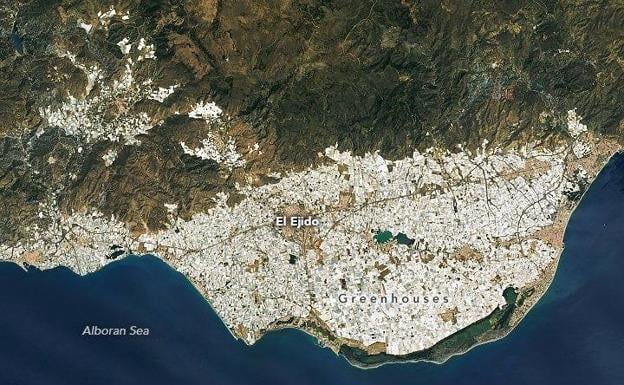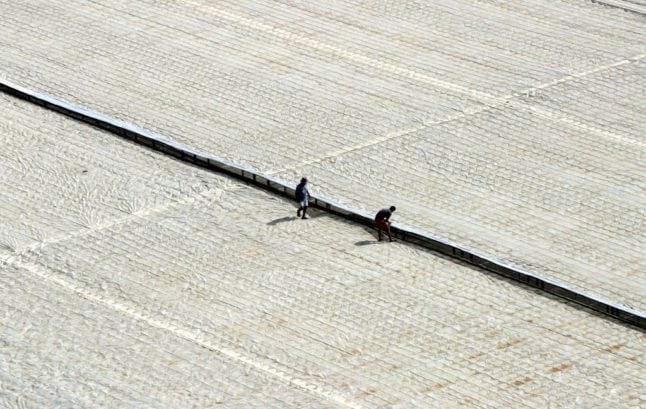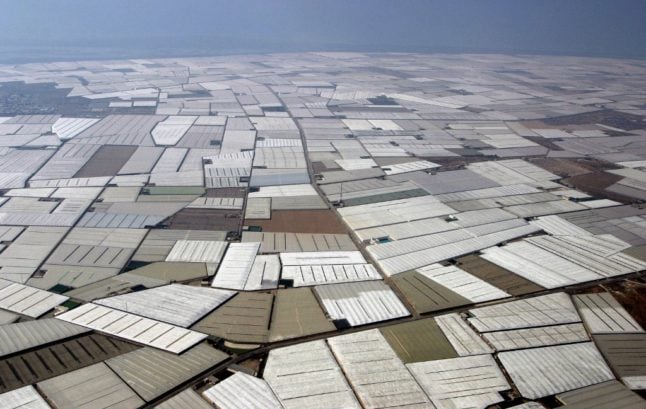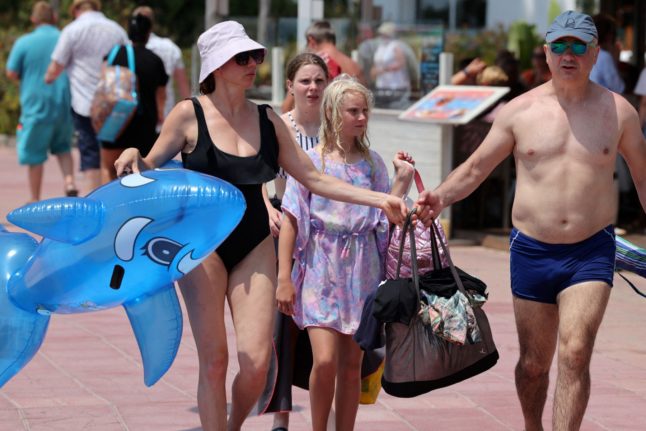What is it?
Spain’s ‘mar de plástico‘ (literally ‘sea of plastic’ in English) is a sprawling network of greenhouses in the south-east Andalusian province of Almería, which is sandwiched between Murcia and Málaga on the southern coast.
Of the 70,000 hectares of land used to grow fruit and vegetables in Spain, over 30,000 are in Almería alone. The Poniente Almeriense area, where most of the crops are grown, got its nickname because the greenhouses’ white plastic tarpaulins stretch as far as the eye can see.
In fact, these greenhouse networks are so large that they are even visible from space and have been photographed by NASA satellites – one of the few manmade structures visible from space.

Spain’s 70,000 hectares trails only China, which has around 82,000, meaning that Almería’s mar de plástico makes up around half of the world’s second biggest crop growing area.
The area, therefore, has also earned another nickname: ‘the orchard of Europe’ (la huerta de Europa).
It grows all sorts of fruit and vegetables, namely tomatoes, cucumbers, peppers, aubergines, courgettes, melon, strawberries, and watermelon, as well as many types of flowers including roses and chrysanthemums which are then used for carnations and ornamental flowers.
When did it start?
This area of Almería wasn’t always a major producer.
In the 1950s and 1960s, the local farmers there grew grapes but low yields made the business fairly unprofitable. To try and boost their production output, they decided to use the structure of the vines to cover the crops with plastic sheeting, aiming to shield them from winds. The farmers quickly realised, however, that the plastic covering not only protected the crops from wind damage, but increased the temperature and gave them a greater yield of a higher quality.
This led to an explosion in the number of greenhouses around Almería, and also the local population. In the town of El Ejido, for example, a town that in the 1950s was barely a hamlet with a handful of houses, now has 12,000 families that live and work on the greenhouses. Between 1994 and 2014 alone, the population almost doubled, going from 45,000 to 84,000 inhabitants, many of them foreign migrants coming for seasonal crop picking work.
How important is it?
As its other moniker might suggest, ‘the orchard of Europe’ sends the vast majority of its produce to other European countries. In fact, around 93 percent this is exported to European neighbours, namely the United Kingdom, Germany and France. These colder Northern European countries are heavily dependent on Spain’s fruit and veg production, particularly in the winter months.
The UK, for example, gets 20 percent of its tomatoes from south-east Spain.
But the significance of the mar de plástico is twofold. Not only do other European countries depend on it for their fruit and vegetables, but it also makes up a sizeable chunk of the Spanish economy. Agricultural exports are one of the foundational sectors of Spain’s economy, along with tourism, and worldwide Spain is one of the world’s biggest exporters and eights in terms of total production volume.
Almería’s mar de plástico is responsible for a substantial 40 percent of Spain’s total fruit and vegetable exports.
Up to 59 percent of Spain’s total agricultural production is fruit and vegetable, and in provinces like Almería, as well as the neighbouring region of Murcia, where around a fifth of national exports are grown, fruit and vegetable production is an integral part of the local economy.

What environmental impact does it have?
As you might expect, such intensive agricultural production has an environmental cost.
According to a study from Food Unfolded, the plastic sea generates around 33,500 tonnes of plastic waste every single year. This impacts local wildlife, and in recent years a dead sperm whale on the coast of Almería was found to have 17kg of plastic in its stomach, mostly from the tarpaulins used to cover the greenhouses.
However, Almería’s plastic sea has more of a mixed environmental impact than you might imagine.
According to Diario de Almería, the Almería model has “become an international benchmark in environmental matters” and counteracted the area’s carbon footprint by almost half (45 percent).
“Its 30,456 hectares of greenhouses,” the newspaper claims, “are continuously absorbing carbon dioxide, which creates the so-called ‘albedo effect’ and counteracts the impact of climate change.”
Equally, owing to the reflectivity of the white tarpaulins on top of the greenhouses, unlike the rest of the Andalusia region Almeria’s temperature has actually fallen by 0.8 °C compared to surrounding areas, Food Unfolded claim.

How important is Spain’s ‘sea of plastic’ to food shortages in the UK?
Shortages of fruit and vegetables in British supermarkets have made headlines in recent days, with the ruling Conservative party and some supermarket chiefs blaming it on adverse weather conditions in southern Spain and North Africa.
There is currently a debate raging over whether Brexit (in the form of foreign recruitment problems and extra red tape for EU farmers) has been more pivotal in causing this fresh produce scarcity in the UK than the weather in Spain, as there is currently no evidence of food shortages in Spain itself.
READ MORE: Has Spain’s weather really caused fresh food shortages in UK supermarkets?
But in truth, Almería’s ‘sea of plastic’ is a key component in the UK’s delicate balance of food production and trade post-Brexit.
The UK is Almería’s second most important export market after Germany. For example, British supermarkets and fruit and vegetable stores get around 20 percent of their tomatoes from the Poniente Almeriense.
Almería farmers also supply plenty of other fruit and veg to the UK, and local associations have warned that production levels are down due to adverse weather patterns (25 percent fewer peppers, a 21 percent decrease in cucumber numbers and a 15 percent reduction in zucchini numbers).
Even though plastic greenhouse sheeting does help to grow crops during the winter months, it’s not always infallible against cold snaps, as evidenced by this video of an Almería farmer showing how temperatures as low as -4C had destroyed his crops in January 2023.



 Please whitelist us to continue reading.
Please whitelist us to continue reading.
Member comments